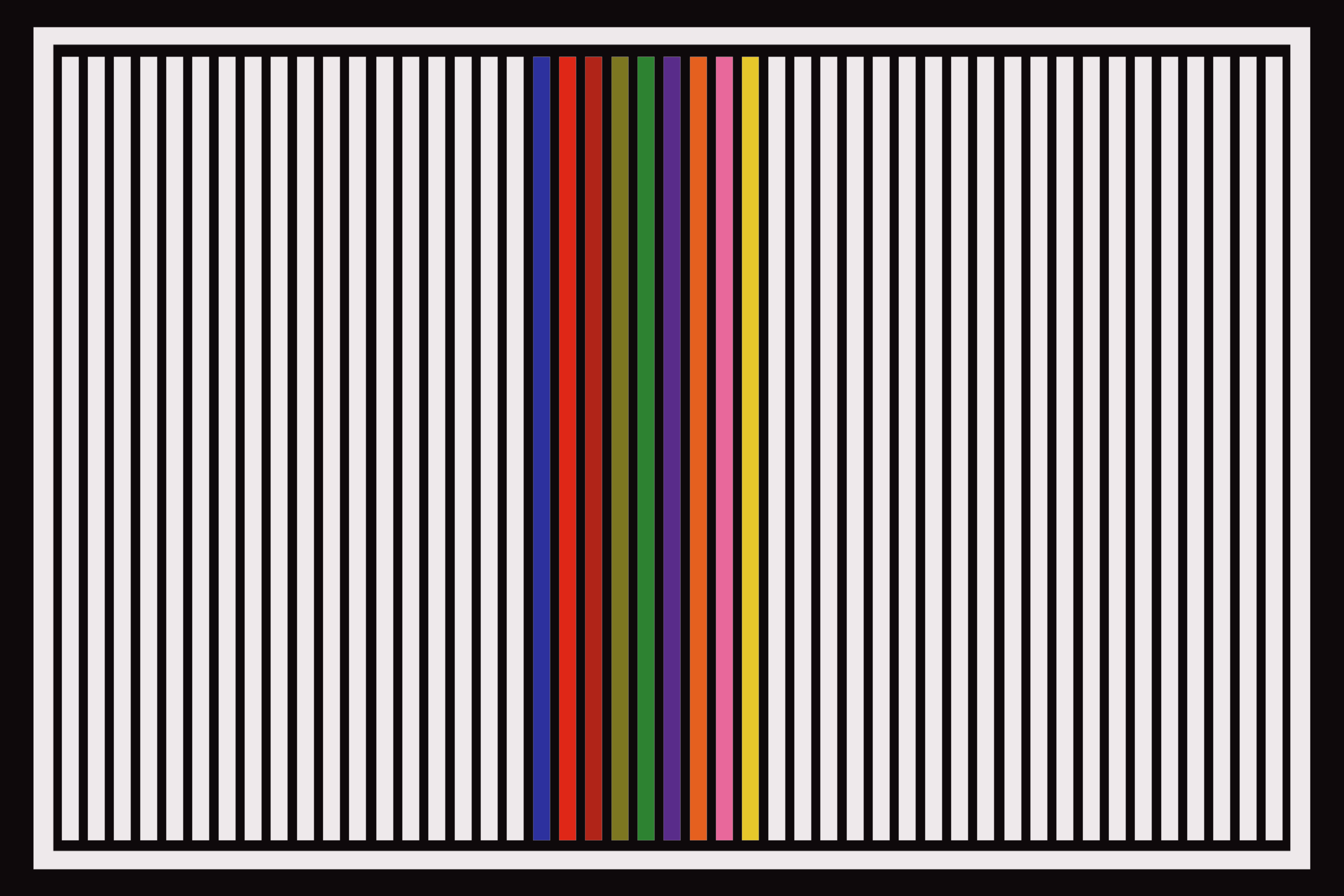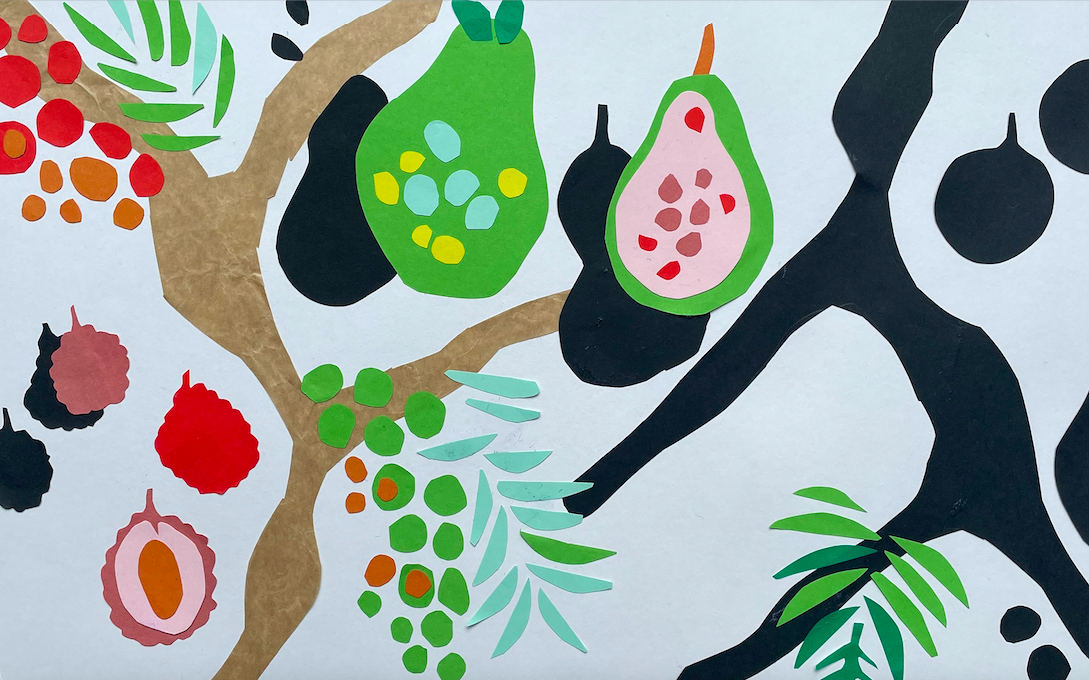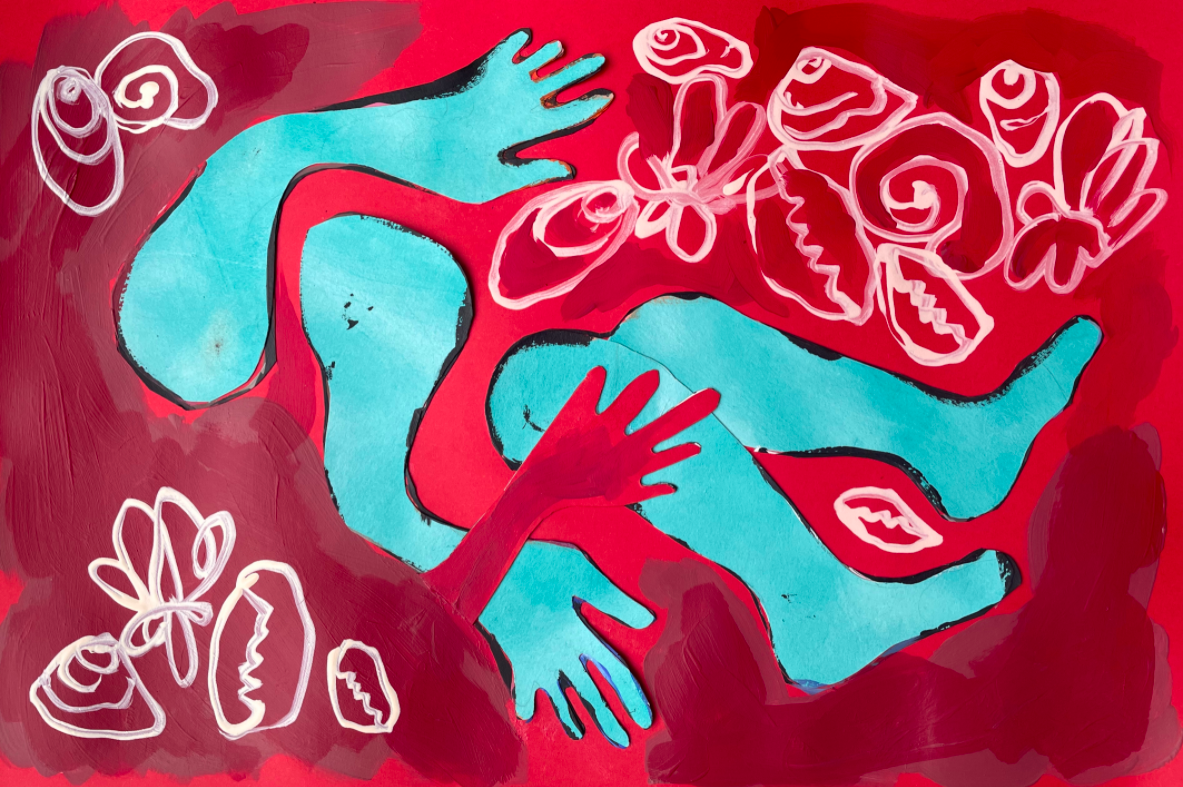
‘And So, My Brother, Hail, and Farewell!’
For Lycidas is dead, dead ere his prime,
Young Lycidas, and hath not left his peer.
— ‘Lycidas’, Milton
One April afternoon in 2020, during the sudden lull of lockdown, I placed a shoebox on my sun-flooded desk. I lifted outa photograph of myself as a toddler, bright-eyed against a dull studio backdrop; a drugstore snapshot of my mother in a Pennsylvania yard, her hand raised to a blossoming tree branch; and a fading black-and-white print of my grandfather (whom I had hardly known) with the Taj Mahal reflected in the waters at his feet. I considered his face, as mysterious as it was familiar, flickering with the familial resemblances shared between myself and the relatives I knew, either in life or through pictures. At once, each of these photographs was both a cipher and a clue.
Such family relics, posed or candid moments in daily life, curled and faded in analogue form, are archival objects occupying a liminal role between art and detritus. Years after their passing, the dead stubbornly haunt those pictures with their presence. The instantaneous quality of the photograph makes it appear as if the individual has literally impressed, or left their ghost, upon the film roll: in an analogue camera, light forms an image by bouncing off a body into the camera and marking the film roll emulsion. Yet, thus imprinted then developed, so many photographs languish inert and unremembered in boxes such as mine.
The term ‘elegy’ is derived from elegos, the ancient funeral lament that was one of the first poetic forms of ancient Greece. After death, we find the mourner’s wordless keening on the one hand, and the deceased’s mute image on the other. Poet and critic Edward Hirsch has noted how the elegy “ritualises grief into language and thereby makes it more bearable”. He describes how this form allows “wordless anguish” to find succour in linguistic acts. Occupying the intersection of image and text, the photoelegy is a way of apprehending inexpressible grief: the photograph articulates what a purely textual elegy cannot convey. Poets including Anne Carson, Victoria Chang, and Diana Khoi Nguyen have opened new possibilities for the poetic form by incorporating family photographs into their elegiac work. When I first discovered their photoelegies – Nox (2010), Dear Memory (2022), and Ghost Of (2018) – I was struck by how these poets not only inserted illustrative images to conjure the elegised individuals, but also physically altered photographs in sometimes radical ways, interfering with the materiality of the photographic form by splicing, sewing, superimposing, and otherwise transfiguring the pictures. By writing – and overwriting – images in this way, poets can reframe family photographs. The photographs themselves, no longer illustrative supplements, reshape the text in a process of mutual expansion.
Anne Carson created her extraordinary hybrid accordion book, Nox, after learning of the death of her estranged older brother, Michael. The texts used – written by Carson, her brother, and the Roman poet Catullus, amongst others – are all presented as facsimiles. The images reproduced are family photographs. They include a baby in a shaft of light shining through curtained windows, a boy clad in swimming trunks and goggles by a garage door, a shadow cast on pristine snow in front of a family home. The photographs do not harbour Carson’s brother after death but present him in a moment of living. By incorporating her brother’s memory in the form of images and not just words, Carson summons an ambiguous and haunting presence. The poet sometimes reproduces unaltered photographs but elsewhere modifies them. On some pages, a photograph is sliced so small as to become wholly abstract. I caught myself contemplating how, if excised and scrutinised, the single square where my mother’s hand meets the flowering apple branch might throw a new light on our relationship. At the start of Nox, Carson writes: “I wanted to fill my elegy with light of all kinds”, but notes that “words cannot add” to death. By incorporating family photographs into her elegy, Carson had found a way to render loss in light.
In Dear Memory, poet Victoria Chang embeds her family photographs in a poetic context. She overlays handwritten notes onto images of family members, anchoring their restless silences. Atop one photograph, five separate slips of paper have been overlaid which read:
Even our laughter is
held in. Can memory be
unhoused or is it
the form in which
everything is held?
This gloss of memory points to its inherent paradox: it both adheres to a unique consciousness and contains memories that can be accessed by others. These words appear on and around a colour photograph of the poet as a child with her paternal grandmother, each in a floral dress. Looking at it, I wondered what I would ask my grandfather, a widower left with five young children, if I were to put myself in dialogue with his printed image. A final photograph, depicting two small girls – presumably Chang and her sister with their parents – has red thread sewn across her mother’s face, obliterating her features. The photograph is placed on a sheet of lined paper that bears the text:
I’ve always thought
the coordinates of your
words are death.
When I finally find the location, I learn that
there were never any
words there, just
blank paper, everywhere.
Chang’s material interference with the form of the photograph shows how text can weigh down these images, pinioning them with facts and questions that the reader cannot discern alone. Yet even a process of discovery can end in silence, and her statement acknowledges the impossibility of fully knowing the dead.
By manipulating the photograph, the poet can ‘write’ with the image as surely as she does with words, creating a melding of text and image that is not merely reflective but generative of new material and meaning. Diana Khoi Nguyen makes use of family photographs which have already been transmuted before in Ghost Of. Two years before he died by suicide, Nguyen’s younger brother Oliver, still a young man, literally cut himself out of the family photographs displayed in their parents’ home. Nguyen’s book of poems incorporates these altered photographs in order to, as she puts it, “fill in the space left behind by Oliver” by writing into the lacunae of his absent figure. The gaps sometimes form a constraint that dictates which words Nguyen can and cannot say. The edges of a photograph stipulate the truncating of words in a move that recalls Susan Sontag’s observation that every photograph is a “token of absence”. Indeed, the title itself – Ghost Of – underscores the elision at play when it leaves the ghost’s identity in question, rather than straightforwardly naming it as Oliver’s. Paradoxically, this absence of reference spotlights the individual who has been lost, presaging the book’s preoccupation with presence as absence. Nguyen’s writing, a speaking into a visual silence, constitutes the act of grieving as one of persistence, a presence-in-absence which every survivor is doomed to enact, marooned as they are in the mortal realm.
Milton’s ‘Lycidas’ concludes with a reassuringly crisp photographic detail:
At last he rose, and twitch’d his mantle blue:
To-morrow to fresh woods, and pastures new.
After I replaced the lid on the box of photographs, I turned to examine a plastic bag of memory cards and external hard drives, each of them containing many thousands more images than my shoebox. Flash-frozen photographs will outlast our mortal flesh. If the traditional elegy “ritualises grief into language”, as Hirsch put it, then incorporating photographs into this ancient poetic form promises another ritual for processing the remnants of the dead. By blending words and altered images, the poet transforms analogue prints into a malleable medium. One can only guess at the role photographs might play now that poets begin to mourn with digital rather than analogue images. As our virtual archives of family photographs grow vertiginously vast, these photoelegies offer a tantalising preview of how we might one day come to lay the dead to rest. ∎
Words by Sylee Gore. Art by Ben Beechener.







